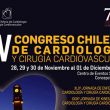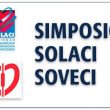The aim of this study was to assess the use of measuring left atrial pressure to complement transesophageal echocardiography and doppler imaging. Procedure efficacy is measured in the cath lab by echocardiography. However, these measurements are operator dependent and might be influenced by left ventricular function and changes in left atrial compliance. The study<a href="https://solaci.org/en/2019/01/04/continuous-monitoring-of-left-atrial-pressure-during-mitraclip-regardless-echocardiography/" title="Read more" >...</a>
Radial Access Is Always Preferred, Even for Treatment of the Left Main Coronary Artery
The potential need for a 7-Fr guidewire, the use of several coronary guidewires and/or a kissing balloon, and the requirement of indispensable monitoring by intravascular ultrasound (IVUS) have been used by some interventional cardiologists as excuses to resist radial access. In that sense, left main coronary artery angioplasty was the last stand of femoral access.<a href="https://solaci.org/en/2019/01/04/radial-access-is-always-preferred-even-for-treatment-of-the-left-main-coronary-artery/" title="Read more" >...</a>
Everolimus-Eluting Stents Finally Have a Rival and Not Just a “Non-Inferior” Stent
In this large randomized trial, there were significant differences as regards both target-lesion failure and target-vessel-related infarction, which persisted through a 2-year follow-up and favored treatment with an ultrathin-strut bioresorbable-polymer sirolimus-eluting stent (Orsiro) compared with the gold standard, a durable-polymer everolimus-eluting stent (Xience). Moreover, there were significantly lower rates of target lesion revascularization and late/very<a href="https://solaci.org/en/2019/01/04/everolimus-eluting-stents-finally-have-a-rival-and-not-just-a-non-inferior-stent/" title="Read more" >...</a>
Is TAVR at Hospitals Without Backup Cardiovascular Surgery Feasible?
Patients undergoing transcatheter aortic valve replacement (TAVR) at hospitals without cardiovascular surgery available are at significantly higher risk. That in itself is a call for attention; however, a propensity-matched analysis shows that the short- and long-term mortality rates are similar among patients treated at hospitals with and without cardiovascular surgery backup. This debate emerged a<a href="https://solaci.org/en/2018/12/03/is-tavr-at-hospitals-without-backup-cardiovascular-surgery-feasible/" title="Read more" >...</a>
SOCHICAR@SOLACI Symposium at SOCHICAR 2018 Congress
Within the 55th Chilean Congress of Cardiology and Cardiovascular Surgery, which is taking place in Concepción, Chile, SOLACI held a Joint Session with SOCHICAR on Structural Heart Disease. The moderators for this session were Dr. Mario Araya (Chile), Dr. Eugenio Marchant (Chile), and Dr. Hugo Londero (Argentina). Among the participating lecturers, the presentations by Marcio Montenegro (Percutaneous Treatment of Functional<a href="https://solaci.org/en/2018/12/03/sochicarsolaci-symposium-at-sochicar-2018-congress/" title="Read more" >...</a>
Aortic Stenosis and Dialysis: Is TAVR the Strategy of Choice?
Courtesy of Dr. Carlos Fava. TAVR has been shown beneficial in high and moderate risk patients, but there is a group of patients that require dialysis on account of kidney deterioration. This comorbidity is due to bad cardiovascular evolution associated to diabetes, bleeding and thromboembolic events. For some time, we have been using an<a href="https://solaci.org/en/2018/12/03/aortic-stenosis-and-dialysis-is-tavr-the-strategy-of-choice/" title="Read more" >...</a>
SOLACI@SOVECI Symposium at the XVI Venezuelan Congress on Interventional Cardiology
The XVI Venezuelan Congress on Interventional Cardiology will take place next Saturday, December 1st, 2018, at La Trinidad Teaching Medical Center (Caracas). SOLACI is honored to contribute with the organization of this event by means of two symposiums addressing important issues related with Interventional Cardiology on Structural Heart Disease. Here is the detailed information for<a href="https://solaci.org/en/2018/11/27/solacisoveci-symposium-at-the-xvi-venezuelan-congress-on-interventional-cardiology/" title="Read more" >...</a>
Clinical Improvement Without Ventricular Function Improvement After CTO
The benefits offered to patients by attempting the rechanneling of a chronic total occlusion are still unclear. Additionally, sometimes the procedural risks are somewhat undetermined. Taking into account these controversies, this work sought to prove whether successful rechanneling of a chronic total occlusion improves ventricular function. This is not a soft endpoint; it has been<a href="https://solaci.org/en/2018/11/23/clinical-improvement-without-ventricular-function-improvement-after-cto/" title="Read more" >...</a>
Differences in Stroke between TAVR and SAVR in Intermediate Risk Patients
Transcatheter aortic valve replacement (TAVR) is more and more frequent in lower risk populations that had previously been treated with surgical valve replacement (SAVR). A small difference in neurological events could have significant consequences when it comes to deciding a course of action. This study is a sub-analysis of the randomized study SURTAVI (Surgical Replacement<a href="https://solaci.org/en/2018/11/09/differences-in-stroke-between-tavr-and-savr-in-intermediate-risk-patients/" title="Read more" >...</a>
TAVR in Low-Risk Patients with “Zero” Mortality and “Zero” Stroke
Transcatheter aortic valve replacement (TAVR) is now the standard of care for patients with symptomatic severe aortic stenosis who are at extreme, high, or intermediate risk for surgery. This multicenter, prospective study (Feasibility of Transcatheter Aortic Valve Replacement in Low-Risk Patients With Symptomatic, Severe Aortic Stenosis) included low-risk patients and was approved by the United<a href="https://solaci.org/en/2018/11/09/tavr-in-low-risk-patients-with-zero-mortality-and-zero-stroke/" title="Read more" >...</a>









